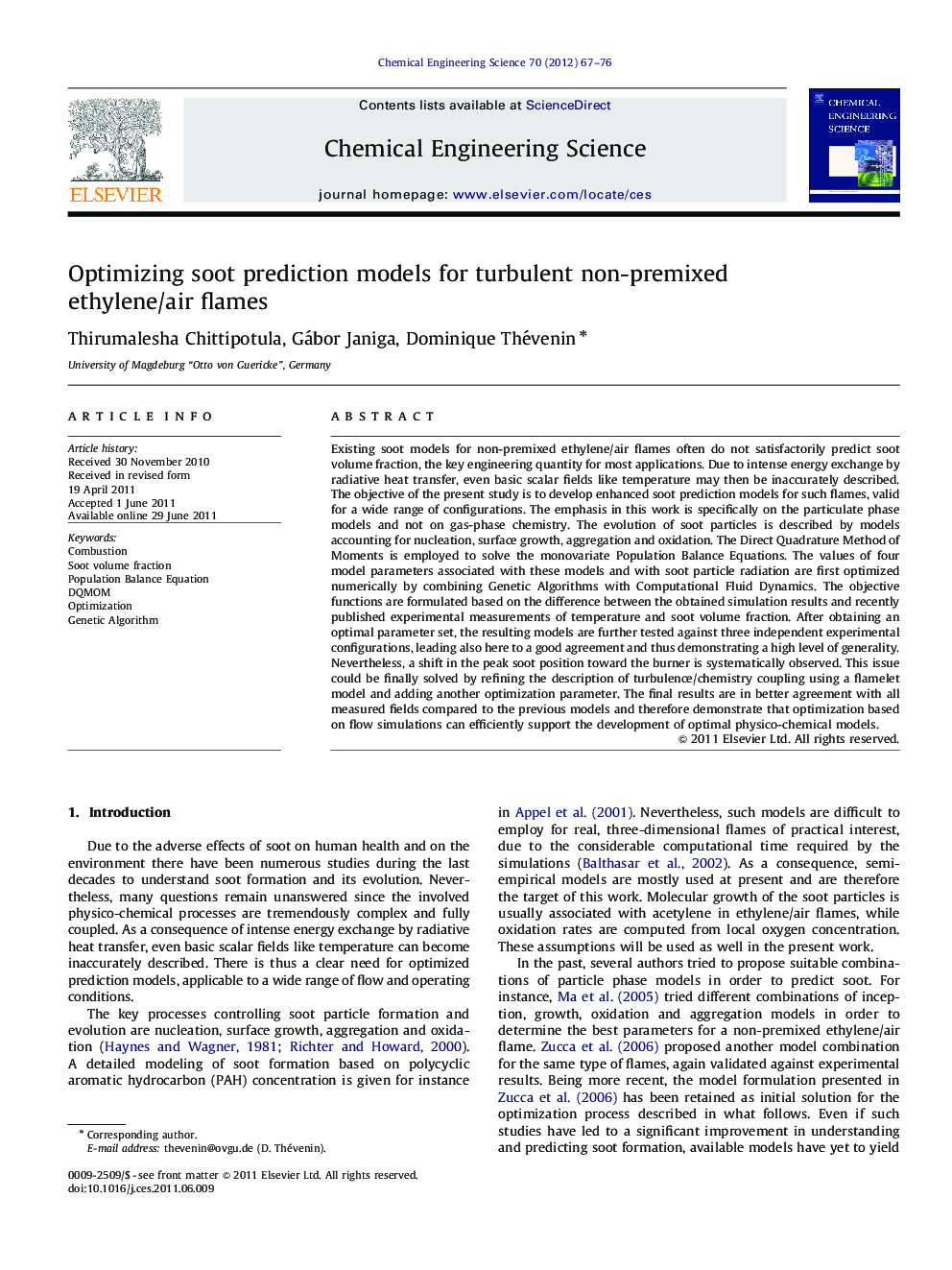| کد مقاله | کد نشریه | سال انتشار | مقاله انگلیسی | نسخه تمام متن |
|---|---|---|---|---|
| 155821 | 456912 | 2012 | 10 صفحه PDF | دانلود رایگان |

Existing soot models for non-premixed ethylene/air flames often do not satisfactorily predict soot volume fraction, the key engineering quantity for most applications. Due to intense energy exchange by radiative heat transfer, even basic scalar fields like temperature may then be inaccurately described. The objective of the present study is to develop enhanced soot prediction models for such flames, valid for a wide range of configurations. The emphasis in this work is specifically on the particulate phase models and not on gas-phase chemistry. The evolution of soot particles is described by models accounting for nucleation, surface growth, aggregation and oxidation. The Direct Quadrature Method of Moments is employed to solve the monovariate Population Balance Equations. The values of four model parameters associated with these models and with soot particle radiation are first optimized numerically by combining Genetic Algorithms with Computational Fluid Dynamics. The objective functions are formulated based on the difference between the obtained simulation results and recently published experimental measurements of temperature and soot volume fraction. After obtaining an optimal parameter set, the resulting models are further tested against three independent experimental configurations, leading also here to a good agreement and thus demonstrating a high level of generality. Nevertheless, a shift in the peak soot position toward the burner is systematically observed. This issue could be finally solved by refining the description of turbulence/chemistry coupling using a flamelet model and adding another optimization parameter. The final results are in better agreement with all measured fields compared to the previous models and therefore demonstrate that optimization based on flow simulations can efficiently support the development of optimal physico-chemical models.
► Accurate numerical predictions of soot volume fraction in turbulent ethylene/air non-premixed flames are possible.
► The parameters of the employed physico-chemical models have been improved for this purpose.
► The numerical model combines CFD and a reduced Population Balance Equation solver (DQMOM).
► Numerical optimization has noticeably improved the agreement with published experimental results.
Journal: Chemical Engineering Science - Volume 70, 5 March 2012, Pages 67–76